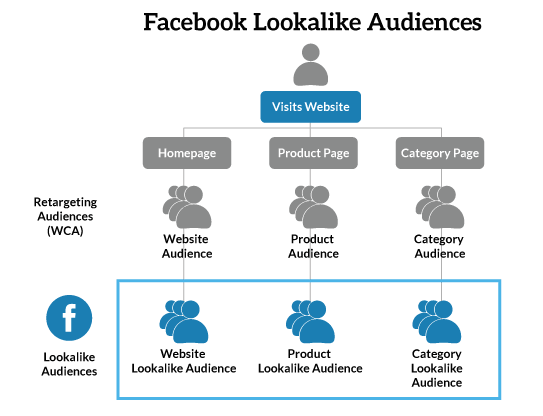Creating content marketing plans in 2020 is going to take more than just crafting sellable or consumable content, engaging with your consumers and even dissecting every bit of content analytics you can find to understand who your consumers are and what they want.
While these are all still relevant and important in Demand Generation marketing, it is also important to know how Demand Gen has evolved. It’s not a new term if that’s what you’re thinking. To formulate a Demand Gen content marketing plan is to understand what it means and to know how to create content that hits all the marks for Demand Generation marketing.
What is Demand Generation?
Demand Generation refers to any plan or action that is done to increase awareness and interest in a product or service, with the ultimate goal being able to create a sustainable and predictable channel that will grow your business and lead to profits.
It is not about creating demands for sales. It is about creating awareness among your target audience via high-quality content to purchase your product or service.
Take for example this scenario…
You might go about life blissfully unaware of needing a Wake-up light alarm clock for. But then, you see it on your friend’s Snapchat story, so you ask them about that little device. You scroll through Facebook and you see an advertisement about it. In a matter of time, you read about the benefits of wake-up lights compared to traditional alarm clocks that give you a mini-heart attack in the morning. And before you know it, you want one. You may not immediately buy it, but the product is already in your head.
Some people might say it’s about tricking people into buying things that they do not need. Creating demand gen content is not about forcing or tricking people, rather it is about consciously providing the right information to the right people at the right time. It is not just about increasing the demand for sales.
Demand generation puts all your content marketing, content creation, and sales initiatives into the right goal-oriented framework, creating a value-added customer journey, from the initial interest right to the purchase of the product.
To plainly define it, demand generation creates the demand for a product or service through a gradual and holistic marketing process that spans the entire company- from product creation, brand marketing, content marketing, and product marketing.
Jason Miller, in his LinkedIn article, says “It’s hard to predict exactly how making people aware of your brand will flow through into interest, consideration, revenues, and loyalty – but that shouldn’t stand in the way of investing in that awareness”.
Demand gen places content marketing with sales harmoniously to achieve the company’s marketing goals.
Why Is Demand Generation Important?
You can build authentic relationships with your potential customers
As consumers, we want value. As a company, you want to create value in your brand, product, and services and align it with your customer’s values.
This will help them become aware of your solutions and how they can solve their pain points. According to Invesp, 59% of shoppers prefer to buy new products from the brands they trust. By adding value, you can build genuine, lasting relationships with your consumers that are built on trust.
Take, for example, the coworking brand, WeWork. Their mission statements put the focus directly on people and their brand value “Create a world where people work to make a life, not just a living.” Through their mission statement alone, they can create interest, trust, and optimism by engaging in purposeful branding.
You can establish genuine buyer trust
Creating content is one thing but creating content that inspires, motivates and educates your ideal customers helps build your company as a brand authority. When people view you as a brand authority, they also see you as a trusted source for information and believe that you can provide the solution to their specific needs. So while they may not buy immediately, you’re on their mind and the minute they want to make a purchase, your company name would be the first they’d search in Google.
You can focus on lead quality
In today’s content marketing ecosystem (not just Demand Generation), it’s not about quantity, it is about quality. The more specific and targeted your marketing initiatives are, the higher-quality leads you will receive. This requires an idea of your customer persona- where do they hang out online and offline, what are their needs, how does your solution help them solve their pain points.
Generate Revenue
Any marketing initiative, actions or plans need to lead to revenue. Through Demand Generating content, you can create measurable interest in your products or services which can be turned into anticipated revenue.
Revenue is the ultimate goal and your most vital metric. But there’s one thing about Demand Generation to be aware of- depending on your business model and business goals, the full performance of the awareness you’ve created may take from six months to a year for it to turn into revenue.
Now that we know what and the why, it’s time to get into the how of Demand Generation.
6 Ways to Create Demand Generation Content
Spend more time creating purposeful content
According to the Social Media Examiner, 81% of marketers plan to increase their use of original written content in 2020.
A huge component of demand generation is inbound marketing, and this is where purposeful and original content creation is vital.
Creating a content strategy for demand generation purposes requires elements such as giveaways and adding valuable content by partnering with industry experts. Creating content is a valuable and long-term investment and it requires consistent effort. Publishing blog posts regularly is not enough- you also need to think of how you can make them valuable for your audience.
When creating content, ask yourself “Why would someone spend their time on my site, reading my website content or blog posts?”. Content creation requires a great deal of time, effort and yes, money. It’s hard work because great content is a crucial element in demand generation. Don’t double down on giving some half-hearted stuff. Give it all you got!
Feature Industry Experts on your Webinars and Podcasts
If you have something to share with people, webinars and podcasts are a great way to do this and it makes for an excellent demand gen content strategy. Not only are webinars and podcasts easy to produce (and involve very little production costs), they also increase your brand’s authority. By featuring industry experts in the industry, you can connect with key influencers, market leaders, and boost your brand awareness.
That said, you also need to plan when it comes to producing your webinar but your main focus should be producing valuable and purposeful high-quality content. Getting Beyonce-status industry experts may be difficult but there are other experts you can feature that are well-respected in the industry. University lecturers, other business owners, researchers, journalists, etc. are a good way to start. The idea here is to give away your best advice, tips, and methods when you conduct your webinars and podcasts.
Optimize Display Remarketing
Remarketing is a surefire way to increase conversion rates and it must be part of your marketing arsenal. Remarketing not only boosts conversions but it’s also an essential awareness-building weapon. As Ryan Malone of says, remarketing creates repetition and it also translates to a lower cost of sale and faster ROIs, you can use it to target warm leads such as website visitors who abandon their shopping carts and leave a website and you can also optimize your messages and budget needs for the pages, or content you want to remarket.
Give away your best sellers
You may want to decrease your use of sponsored posts and instead focus on giving away your products, content, and services for free! It may seem counterintuitive to your bottom line to give away stuff, especially products or services that are of real value. Plus, according to Adobe, 54% of readers don’t trust sponsored content – this is a huge percentage you can’t ignore.
The idea behind giveaways of your best sellers is that it creates trust. You can give away free content downloads for the most popular content on your company (for a limited time), or you can create a promotional offer – for instance “Buy our trusted mixer and get the entire baking set for Christmas!”
This trust will create brand loyalty in your target audience which translates to them coming back to your company to purchase products, services, or content.
Also, free stuff translates to free promo which creates a better brand reputation for you.
A seller on Vinted (a pre-loved marketplace that lets users sell, buy and swap clothes and accessories) includes a hand-written note and free sweets in every item purchased from her store. Customers receive their purchased item, read the note, see the sweets and are elated to have received them. It makes them even more happy to write a review and post this up on their social media channels.
By offering something of value, users are more likely to provide information to you to qualify them as a prospective lead, which is the first step in the demand generation process.
Look into your Lookalike Audiences
As you know, Facebook advertising allows you to create lookalike audiences. This is one of the most powerful and focused targeting strategies on Facebook.
With lookalike audiences, it allows you to increase the potential of reaching the right customers with the right information and you can leverage that from Facebook’s vast data resources. You will be losing out by not utilizing this approach considering how often people spend time on Facebook.
A/B Test your Email Marketing
Email Marketing is a powerful tool in the demand generation lineup. However, not many content marketers are using it the right way or the optimized way. By A/B testing it, you can eliminate all the elements that scare away prospective customers and instead focus on content that speaks to your users.
Every element of your email campaigns from the headline, the subject lines, images, offer placements and call-to-action buttons should be tested to ensure that it performs at its optimum level. Testing also enables you to make better decisions on your campaigns that are based on data rather than on assumptions.
Conclusion
Content marketing in 2020 should incorporate demand generation. Spamming your customers with unnecessary content via their social media channels and emails is only going to hurt your brand image and increase the unsubscribe/unfollow rate.
Offering your best tools, your best content in a valuable and purposeful point of view may take more effort and subsequently more time, but it will generate better leads and sustainable revenue for the long haul.






